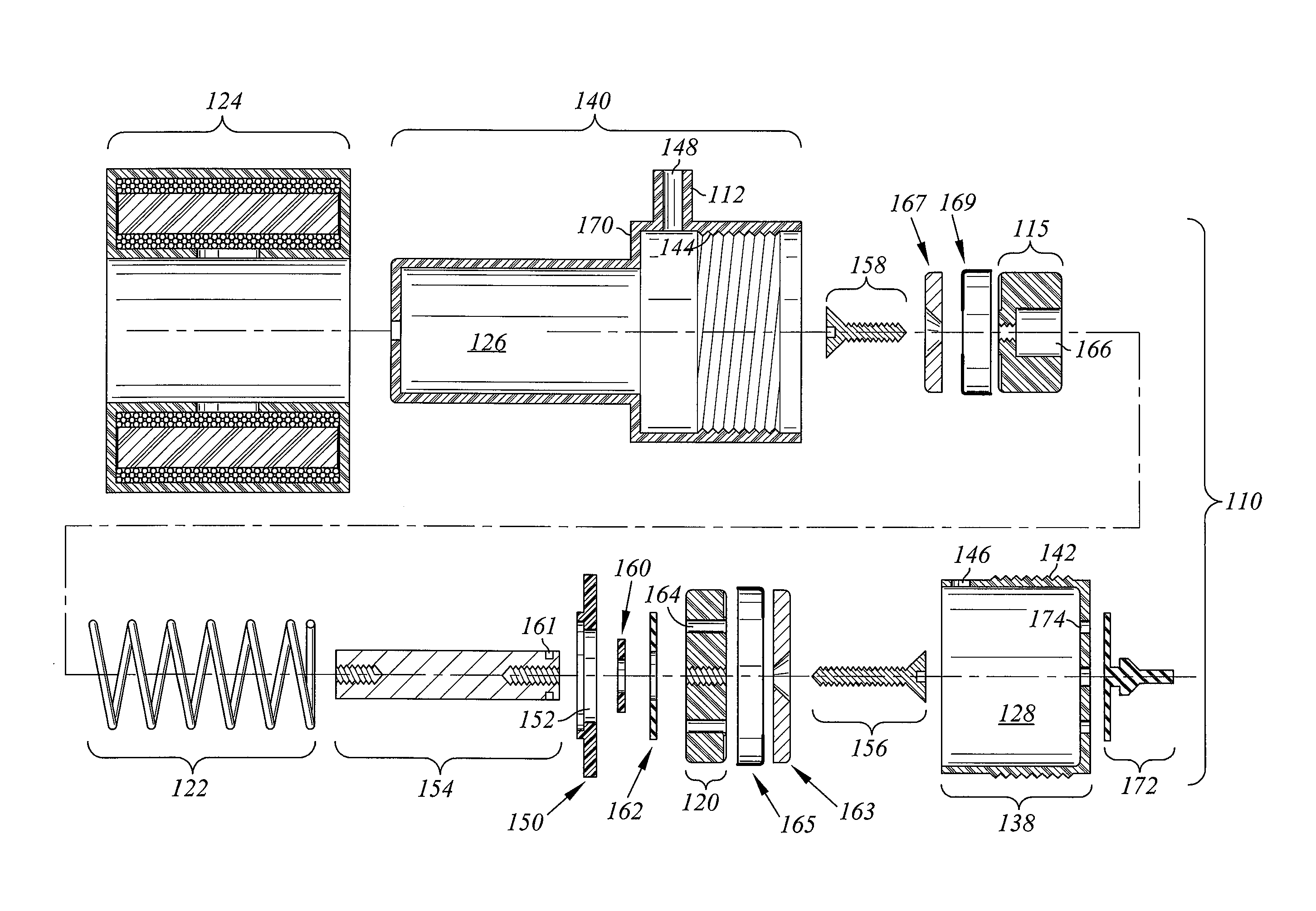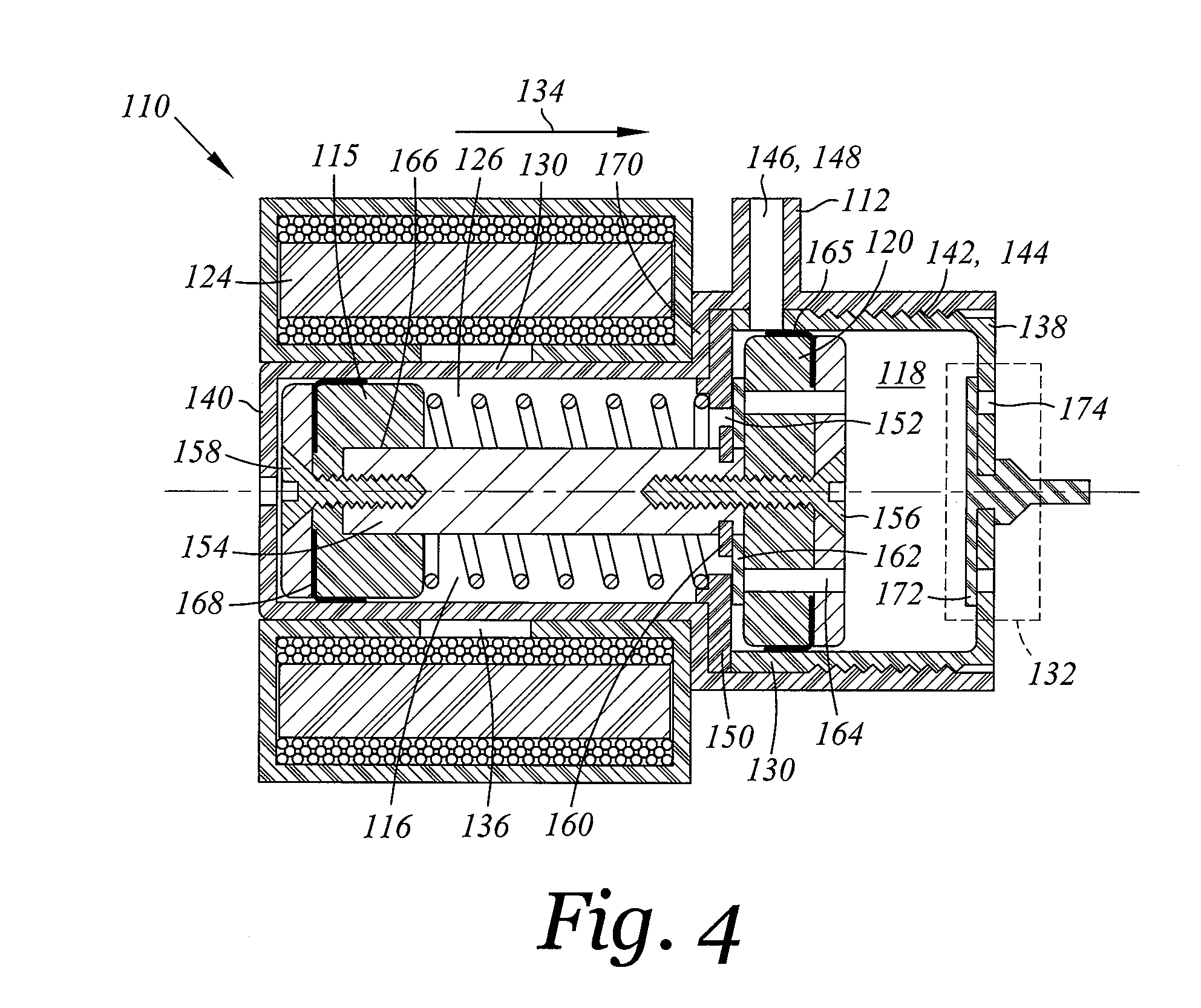Double Acting Fluid Pump
a fluid pump and double-action technology, applied in the field of fluid pumps, can solve the problems of large spikes in fluid pressure at the output valve, increase undesirable vibration and noise, and reduce the maximum pressure spike. , the effect of increasing the volume of the secondary chamber
- Summary
- Abstract
- Description
- Claims
- Application Information
AI Technical Summary
Benefits of technology
Problems solved by technology
Method used
Image
Examples
Embodiment Construction
[0023]As used herein, the term “pump” refers to a device that displaces or pumps liquid or gas. Additionally, as used herein, the term “fluid” refers to liquid or gas such as air.
[0024]Referring now to FIGS. 4-6, a double acting dual stroke fluid pump 110 is shown. The pump 110 pumps fluid out of an outlet 112 during a compression stroke shown in FIG. 5 as well as during a suction stroke shown in FIG. 6. During the compression stroke, a one-way valve 114 is opened so that as a first piston 116 (see FIG. 5) is displaced, the cumulative volume of a secondary chamber 116 and a pumping chamber 118 is reduced thereby pumping fluid out of outlet 112. During the suction stroke shown in FIG. 6, the one-way valve 114 is closed isolating the secondary chamber 116 from the pumping chamber 118 so that the volume of the secondary chamber 116 is reduced thereby pumping fluid out of the outlet 112. The fluid pump 110 discharges fluid during both the compression and suction strokes so that a more e...
PUM
 Login to View More
Login to View More Abstract
Description
Claims
Application Information
 Login to View More
Login to View More - R&D
- Intellectual Property
- Life Sciences
- Materials
- Tech Scout
- Unparalleled Data Quality
- Higher Quality Content
- 60% Fewer Hallucinations
Browse by: Latest US Patents, China's latest patents, Technical Efficacy Thesaurus, Application Domain, Technology Topic, Popular Technical Reports.
© 2025 PatSnap. All rights reserved.Legal|Privacy policy|Modern Slavery Act Transparency Statement|Sitemap|About US| Contact US: help@patsnap.com



